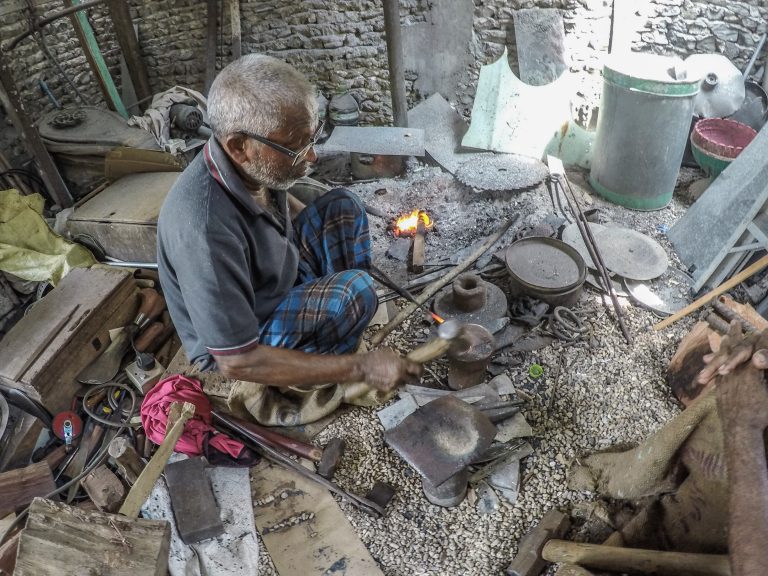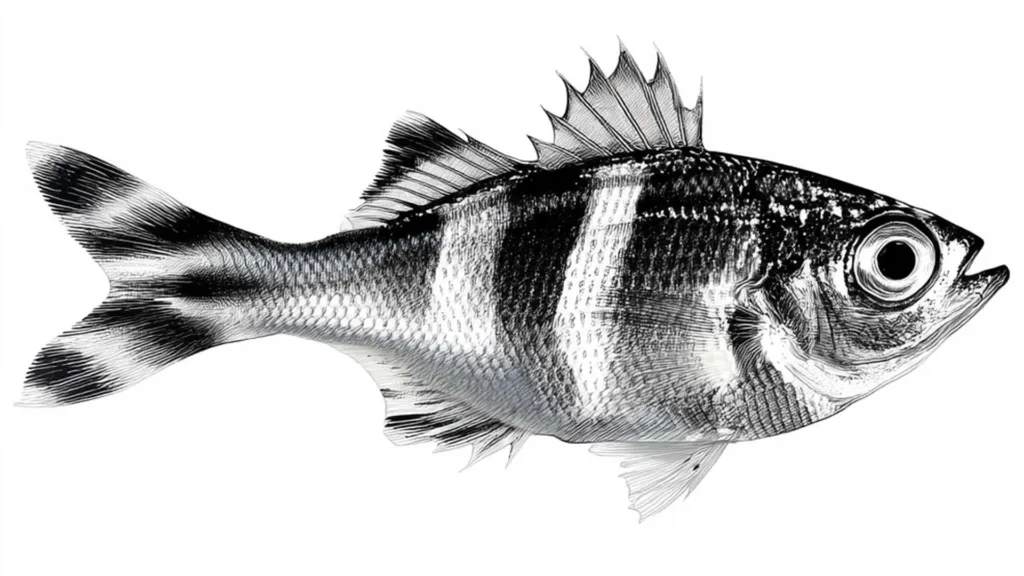
It was a sunny day. I was preparing to collect fish waste from the harbor hoping to land a Giant Trevally (Mudahandhi or Maamudu – my favorite predator in the ocean). I took my motorbike. I drove through the small narrow roads of my ward Dhadimagu.
Coincidentally I went through a road where a specialist man – Thuhthu didi of Ruggandi Bihdharige – was creating unique tools for household purposes. I thought to stop my bike in front of this place. Luckily, I met the blacksmith who was engaged in his creativity. I kept my bike and took some pictures from my GoPro camera. It was amazing; deep-dyed creativity from a tropical island.
Aichankerun (in our dialect), or blacksmith, is one of the ancient craft works that reflects Maldivian heritage. This skill produces tools used in fishery, agriculture, carpentry and many other such products. Light fixtures, tools, cooking utensils, fishing hooks, iron anchors, nails, kitchen and farm knives, and axes are created with ease. The first coins used in the Maldivian economy were also made by local blacksmiths.
Maldivian artisans have been carrying out this work for centuries. It reflects the heritage and artistic skills of Maldivians. However, it is sad that this craft is dying. On my island -Fuvahmulah – there are two blacksmiths. This article covers the craftwork of one of them – Thuthueybey. The other worker is his brother who carries out this specialist work at his home in Dhiguvaandu ward of my island.
Many people still admire this work. People go to aichange, the place where the craft work is carried out, to make knives and household appliances. This small facility creates objects from wrought iron or steel. Forging techniques are used to carry out the specialist work. He uses tools to hammer, bend, and cut the raw materials – all done by hand. One of the most famous tools that is produced in this special place is the machete or Kathivalhi – a famous knife used in almost every household in the Maldives.
It all starts from scratch. Irregular or regular-shaped iron bars are put into the red-hot flame. Heating pieces of wrought iron or steel until the metal becomes soft enough for shaping with hand tools, such as a hammer, anvil and chisel. Heating is carried out using a blower. Thuthueybey’s friend holds a heavy hammer and hits the iron bar that is red hot. He smashes the hammer a couple of times and then Thuthueybey places the iron bar in the fire. When it is again red hot, he places it on the anvil (a block of hard iron that was used as a surface when raw metal was hammered) to allow his friend to hit the iron bar to flatten it. This process is carried out several times till a desired shape is achieved.
In the early days Girunbaa, a box-shaped apparatus made of thick fabric, blows out air keeping the flame at a consistent level. Thuthueybey still uses traditional tools. His ‘weapons’, tools, and equipment include the Girunbaa, Undhun (cooker), Thaggandu (mold or caste), Dhathi, Handas (pliers) and Kakuni Feeru (rasp).
Achankerun is highly skilled and daunting work.
The talented Thuthueybey, making a chisel might flatten a square bar of steel, lengthening the metal, reducing its depth but keeping its width consistent. This process is lengthy and exhausting. But the skilled Thuthueybey carries out the work to achieve the desired requirements and satisfaction. And this is truly an artistic and creative work that can be revived.



